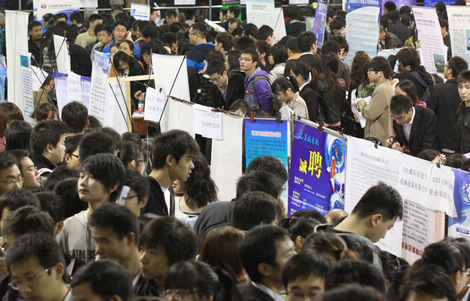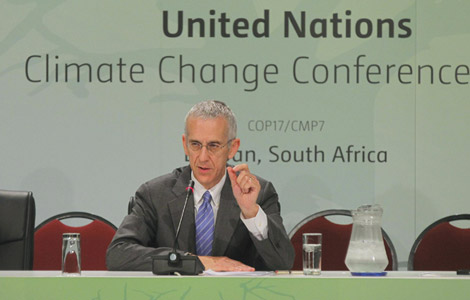China to widen air monitor scope
Updated: 2011-11-11 07:50
By Li Jing (China Daily)
|
|||||||||||
BEIJING - China's environmental planning body is seeking to lower the levels of small particulate pollutants in key industrial regions and cities by about 10 percent by 2015, sources close to the Ministry of Environmental Protection said on Thursday.
And a new set of standards under discussion to evaluate air quality is likely to include readings of PM2.5, the tiny airborne pollutants smaller than 2.5 microns that cause haze and can travel deep into the lungs and damage human respiratory systems.
"China is among the worst polluted places by particulate matter in the world, and the concentration of PM2.5 in most Chinese cities is higher than the safe levels called for by air quality guidelines published by the World Health Organization," said Hao Jiming, a professor from the department of environmental science and engineering at Tsinghua University.
The country now only reports air quality based on readings of PM10, particulate matter smaller than 10 microns, which is why monitoring results do not match people's sense of pollution.
Zhang Lijun, vice-minister of environmental protection, said that Chinese cities are facing severe air pollution.
He admitted that the existing air appraisal system has defects.
"Compared to the WHO guidelines, China's air quality standards are rather lax, and evaluation factors are still limited," he told a Sino-US conference on regional air quality, held in Beijing on Thursday.
Under discussion are a new set of air evaluation standards, which are likely to include readings of PM2.5, and opinions will start to be solicited soon, said Hao.
The concentration of PM2.5 is related to the levels of pollution from burning coal, vehicle emissions and chemical plants, such as sulfur dioxide, nitrogen dioxide, volatile organic compounds and ammonia, according to Hao.
Meanwhile, a comprehensive plan for regional air pollution control drafted by the Chinese Academy for Environmental Planning has set a goal of "significantly lowering emissions of sulfur dioxide, nitrogen oxide and particulate matter" and "notably improving air quality" in 12 key zones by 2015, according to Yang Jintian, deputy chief engineer at the academy.
The 12 key zones - including the Beijing-Tianjin-Hebei area, Yangtze River Delta and Pearl River Delta - are large industrial regions and city clusters, covering 12 percent of China's territory and 42 percent of its population. Together they account for 67 percent of the country's GDP, and about half of pollution emissions.
Power plants, iron and steel factories and cement plants in these areas will have to follow more stringent emission standards, and the areas will also have to upgrade fuel quality for vehicles to reduce pollution emissions.
Hot Topics
HIV/AIDS, Egypt protest, Thanksgiving, climate change, global economic recovery, home prices, high-speed railways, school bus safety, Libya situation, Weekly photos
Editor's Picks

|

|

|

|

|

|







